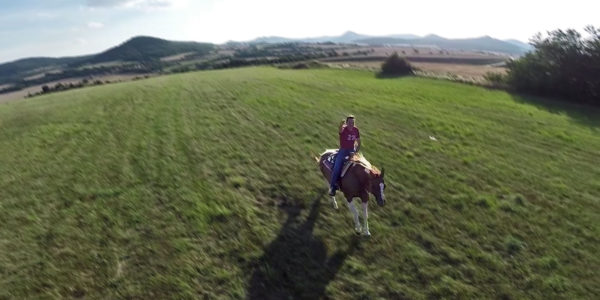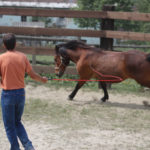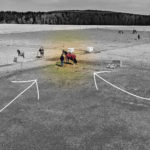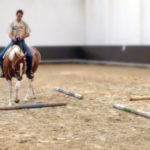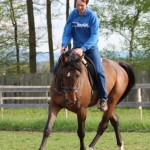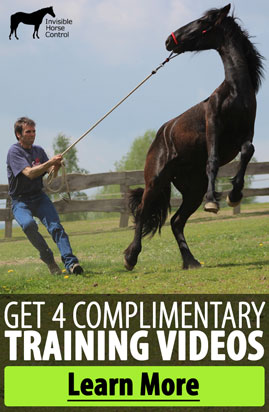If you are scared to canter on the trail because it is difficult to keep your horse in a nice calm canter, it usually has a few reasons.
The first reason why your horse is difficult to slow down
The first reason is that he doesn’t react well enough to the pressure from the bit as you pull your reins.
Your horse simply ignores the pressure when you pull your reins to ask him to stop from a canter. He ignores it even when you start pulling quite hard.
Maybe you are thinking “But my horse stops nicely while I am riding in the ring, he knows what to do when I pull my reins.”
Riding on the trail is very different from riding in the ring
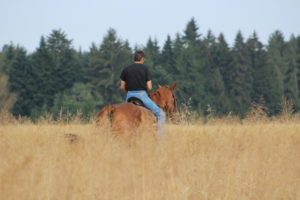 However, there is a really big difference between stopping your horse in an enclosed ring, where he really has nowhere to go, and between stopping him on the trail.
However, there is a really big difference between stopping your horse in an enclosed ring, where he really has nowhere to go, and between stopping him on the trail.
Some horses are slow while riding in the riding and you have to keep urging them for them to even stay in canter, but then as you go riding on the trail they become too fast and very difficult to stop.
You can tell that your horse reacts well on your pressure when you can see that he puts some effort into stopping.
He should be stopping quickly enough as you pull your reins.
While stopping from trot your horse should stop immediately basically without any extra steps.
From a slow canter, it should take your horse around 2 – 3 meters to come to a complete stop from the moment you ask him to stop.
How to check whether your horse stops well enough while riding in the ring?
A good way to check how well your horse reacts on the pressure when you ask him to stop (doesn’t matter if you use a bit or not) is by trying to stop and then back up immediately around 2 – 4 steps.
If your horse stops and then takes 2 seconds before he starts backing up it is not an immediate transition. (If you want to try this out, your horse first has to know how to back up. If you didn’t teach your horse to back up yet, do it before you try this exercise)
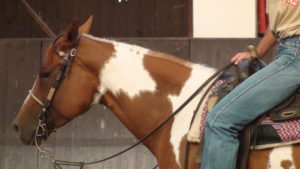
If your horse already is able to stop and immediately transition to backing up, it should become much easier to slow him down and keep him at a slower pace while riding on the trail.
The easier it is to stop your horse and get him to backup in the ring the easier it is going to be slow him down while hacking out.
However, it is always going to be significantly more difficult to get your horse to stop while hacking out.
Second reason why your horse might be too fast while riding on the trail
The second reason might be that he simply learned it.
You should never let your horse canter fast before you are able to reliably control his speed in canter.
If you let your horse canter too fast, too soon, he will just learn to speed up all the way to gallop by himself.
He will start ignoring you when you ask him to slow down, and he will only stop as you reach the end of the field or when other horses slow down as well.
Teaching your horse to canter slow can be quite difficult, and can take a significant amount of time, especially with faster, more nervous horses.
How do you get your horse to maintain a nice slow canter and stop willingly on the trail?
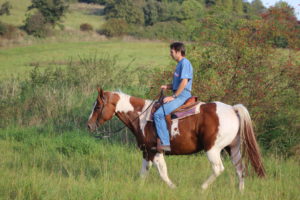 It actually doesn’t matter why is your horse too fast and difficult to stop on the trail. If it’s because he just doesn’t react well enough to the pressure, or if it’s because he learned that it is ok to go fast. Actually, it might also be a combination of the two. I always approach fixing the problem in the same way.
It actually doesn’t matter why is your horse too fast and difficult to stop on the trail. If it’s because he just doesn’t react well enough to the pressure, or if it’s because he learned that it is ok to go fast. Actually, it might also be a combination of the two. I always approach fixing the problem in the same way.
1. Go to a field that is big enough to canter.
2. Make sure you go all the way over there in walk.
3. As you get there start riding on circles, on a square or on a rectangle. Riding on a circle makes your horse realize that a circle has no end, it makes him realize that there is no “clear destination” even when hacking out.
4. You want your horse to realize that he needs to be in canter for as long as you say so, not until space runs out and you reach the end of the field.
5. While riding on circles practice slowing down and stopping. I always start by teaching my horse to stop as I pull my reins. I start gradually pulling my reins and as my horse stops, I gradually release them. It is good to stand still for at least ten seconds after you stop. Your horse is most likely going to learn very quickly that the way to get rid of the pressure from the bit as you pull your reins is by stopping.
However, it is going to take a few weeks, or even months for your horse to really react on the gentle pressure automatically without thinking about it.
Start by slowing your horse down by pulling reins first
Only after my horse is able to stop reliably as I pull reins I can start teaching him to stop as I change my position in the saddle.
If you try to teach him to stop on reins and on your seat at the same time, you are basically trying to teach him two things at once.
Learning two things at once doesn’t just make it difficult for the horse, but also for the rider. Trying to learn both at the same time will take significantly longer.
Start practicing stopping from walk first
I, of course, start by learning to stop from walk first. I start stopping from trot and later on from canter, only after my horse can stop reliably from the slower gait first.
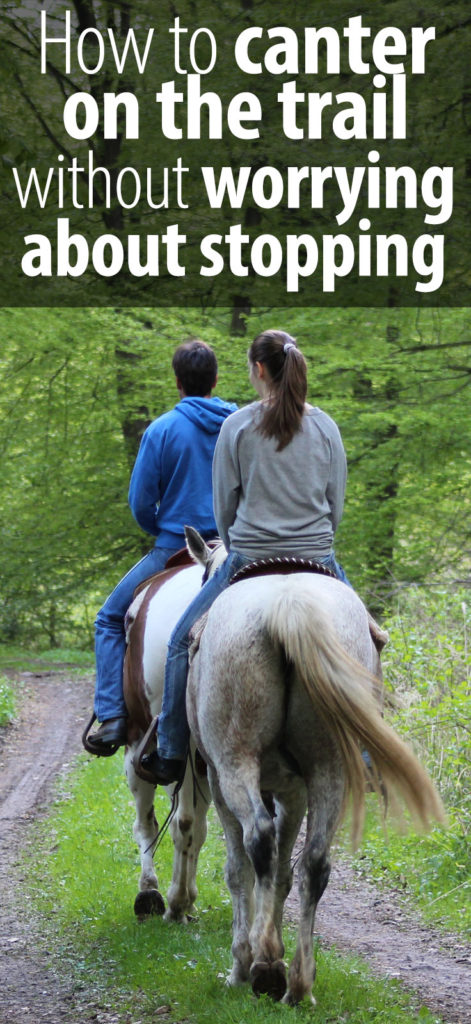
Pin this article on your Pinterest!
I start by riding on circles in walk and I start trotting only after my horse listens well enough in a walk and I can be riding on a lose rein.
When I want my horse to slow down while riding on a circle I can also slow down by asking him to make the circle smaller instead of pulling my reins.
I don’t forget to occasionally change direction.
Only after I am able to trot in a steady pace and on a lose rein, I can start practicing canter.
Ride only on circles when you first start riding in canter
When I start riding in canter I always start by riding on a small circle. Small circle gives you more control.
After my horse keeps a nice steady pace on a small circle, I can start making it bigger.
React as quick as possible
If your horse speeds up, it is important to react as quickly as possible. Ideally right during his first step that he starts going too fast. React by asking him to slow down, pulling your reins, and taking him on a smaller circle.
If you react after 4 steps, your horse is already going to gain much more momentum and he is going to be more and more difficult to slow down with every extra step.
While practicing canter work it is important to already be able to keep your balance in the saddle without having to focus on it. You should be able to pay all your attention to your horse. If you have to focus on keeping a correct seat in canter, improve your seat before you try to teach your horse anything.
It is never easy to slow down a horse that has been used to cantering too fast or even galloping on the trail. However, I hope that my tips from this article will help you with it 🙂
